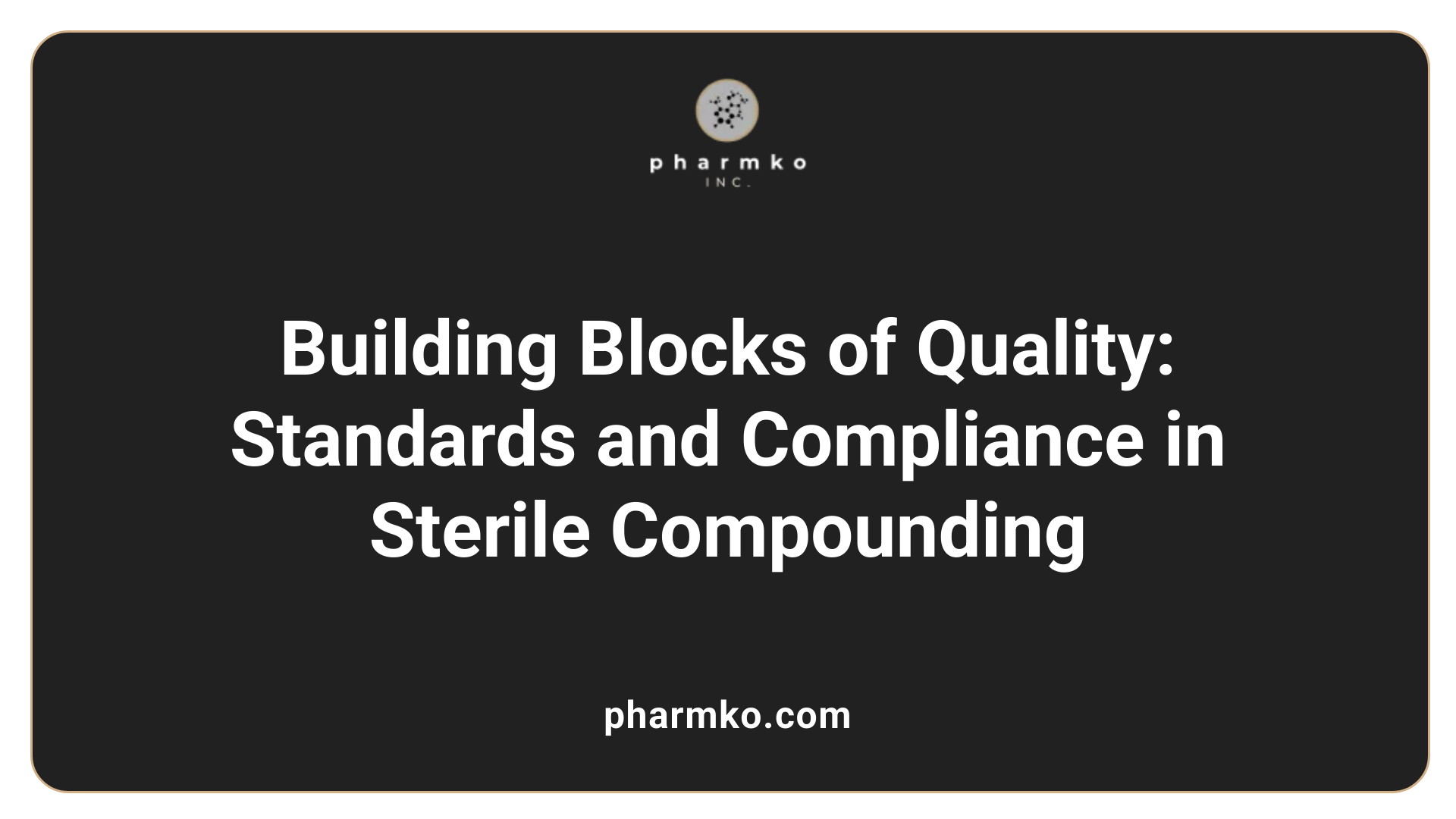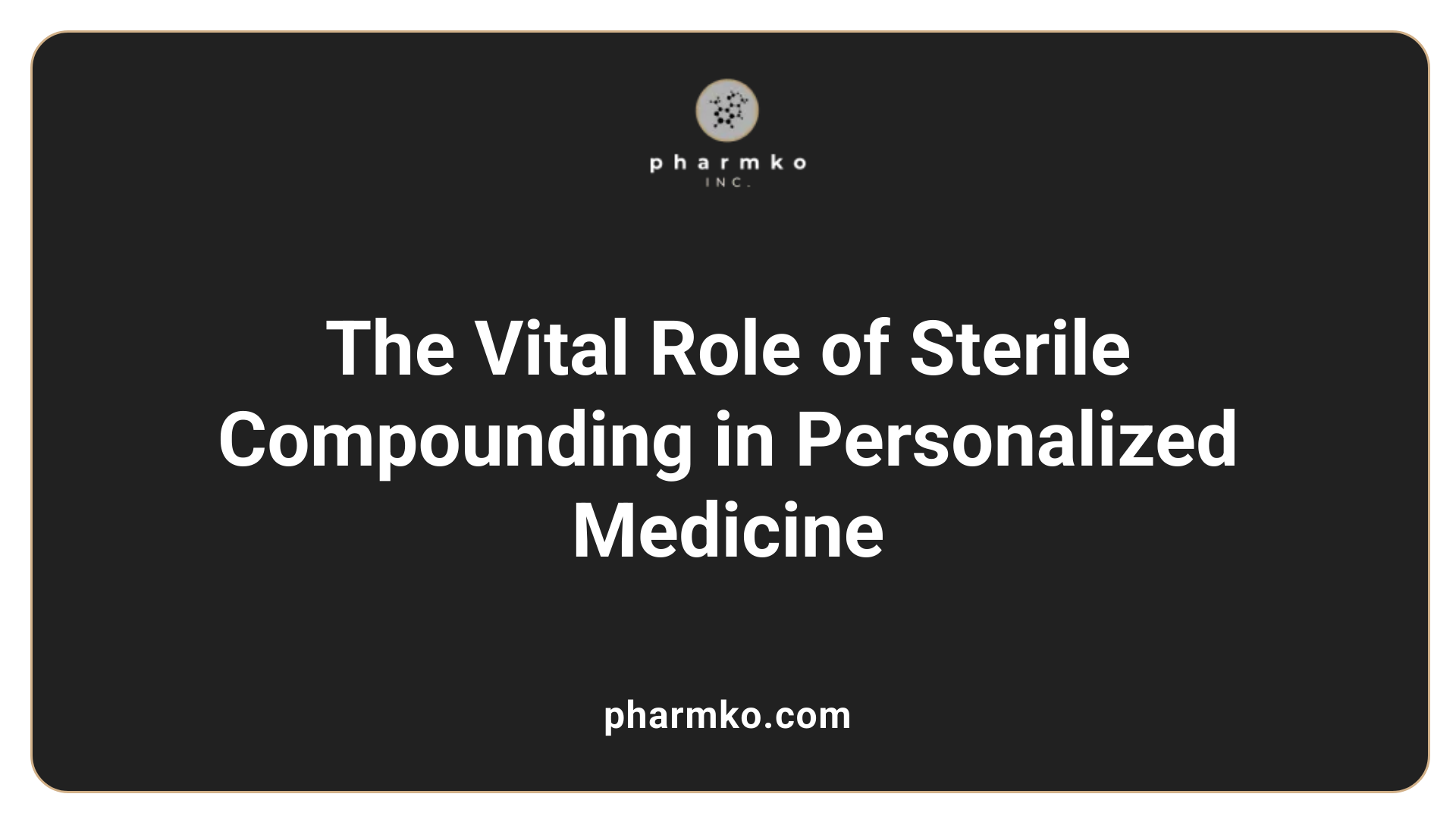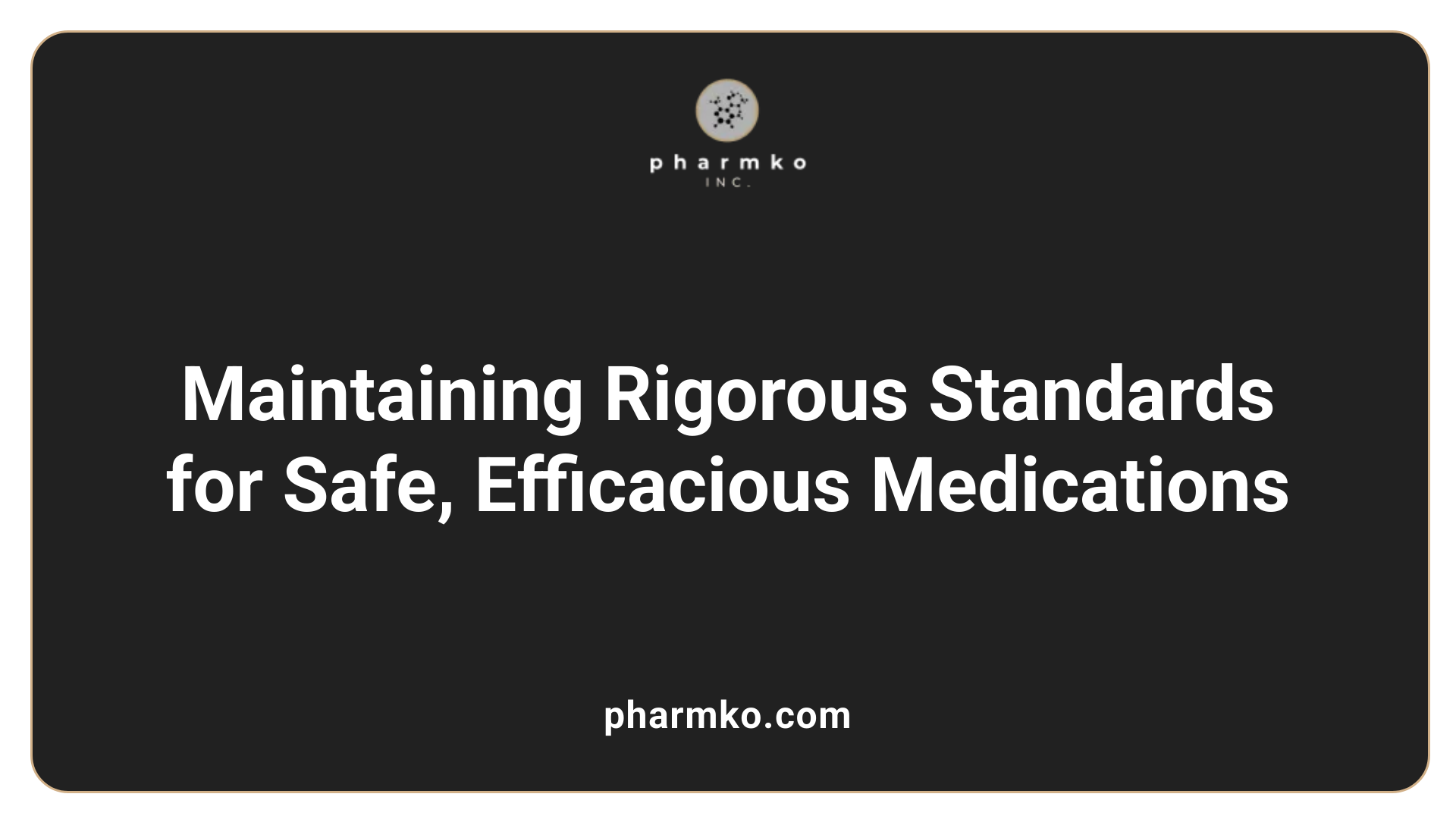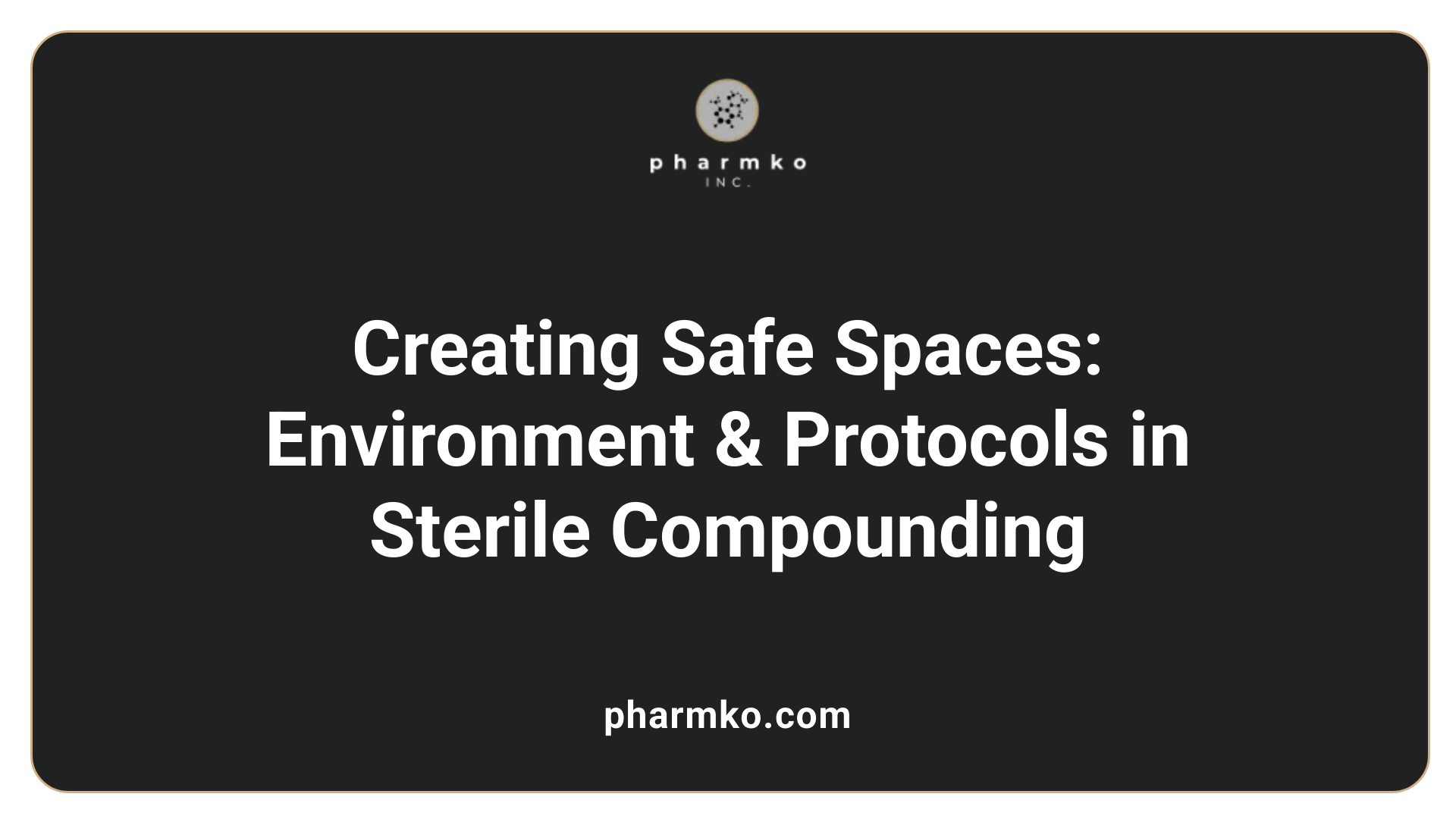How does sterile compounding improve patient outcomes?
Understanding the Critical Role of Sterile Compounding in Healthcare
Sterile compounding is a fundamental process in healthcare that involves preparing medications in a highly controlled environment to ensure safety, efficacy, and personalized patient care. By adhering to strict regulations, employing advanced technologies, and maintaining rigorous standards, sterile compounding directly influences patient health outcomes, reduces contamination risks, and supports effective treatment protocols.
The Foundations of Quality Standards and Compliance in Sterile Compounding

How do quality standards and compliance in sterile compounding impact patient safety?
Implementing rigorous quality standards in sterile compounding is essential to safeguard patients from infections and adverse reactions. Standards such as USP <797> and USP <800> provide detailed guidelines for maintaining a controlled environment, proper personnel practices, and validated procedures.
Adherence to these regulations ensures that compounded medications remain sterile and effective, reducing the risk of contamination. For example, aseptic techniques, environmental controls, and equipment validation are all critical factors that prevent microbial growth and chemical contamination.
Environmental monitoring—such as air quality testing to maintain ISO Class 5 standards—helps detect potential contamination sources early, allowing corrective actions to be taken before medications reach patients. Staff training, including regular competency assessments, guarantees that personnel understand and follow proper procedures.
In recent history, lapses in compliance have led to serious consequences. The 2012 fungal meningitis outbreak linked to contaminated steroid injections exposed over a thousand patients and resulted in fatalities. Such incidents underscore the importance of strict regulatory adherence.
To maintain high standards and improve safety, many facilities utilize advanced technology solutions like automated mixing systems and digital compliance platforms. These tools facilitate documentation, real-time environmental tracking, and staff education.
In summary, comprehensive quality standards and their diligent enforcement are vital for ensuring that sterile compounded medications are safe, effective, and free from contamination. Continuous improvement and compliance are indispensable in protecting patient health and maintaining trust in pharmacy services.
Why Sterile Compounding Is Essential for Safe and Effective Medications

Why is sterile compounding important?
Sterile compounding plays a crucial role in healthcare by enabling the preparation of customized medications, often in injectable or infusion form, that are tailored to individual patient needs. This process occurs within controlled, sterile environments designed to prevent any biological contamination.
Maintaining high-quality sterile conditions involves strict procedures like operating within ISO Class 5 airflow areas, using proper personal protective equipment, and following rigorous cleaning and sterilization protocols. These measures help preserve the quality and integrity of medications, reducing the risk of infections or other adverse effects.
Staff involved in sterile compounding are trained continuously in aseptic techniques and environmental monitoring to uphold safety standards. Proper documentation of procedures and environmental conditions ensures compliance with regulatory guidelines from organizations such as USP 797 and 800, the FDA, and relevant accreditation bodies.
Regulatory oversight guarantees that compounded medications meet safety and efficacy standards. Adhering to these regulations helps prevent contamination incidents that could harm patients, as evidenced by past outbreaks linked to poor practices.
In summary, sterile compounding is vital for delivering safe, effective, and personalized medications—particularly in scenarios where commercial products are unavailable, unsuitable, or require specific adjustments—thus ensuring optimal patient care and minimizing risks.
Ensuring the Quality, Safety, and Efficacy of Medications Through Protocols and Personnel Training

Facility design and environmental controls
Sterile compounding relies heavily on a well-designed environment that minimizes the risk of contamination. Facilities are built with advanced airflow systems that maintain ISO Class 5 (or better) air quality standards. Proper filtration, such as HEPA filters, are essential to remove microbial contaminants and particulates from the air. Environmental monitoring includes regular testing of air quality, surface sampling, and environmental inspection to verify that controls are effective.
Clean, durable surfaces that are easy to disinfect are used throughout the compounding area. Proper HVAC systems maintain pressure differentials, temperature, and humidity levels optimal for sterile compounding. These controls help prevent microbial growth and ensure the integrity of medications during storage and preparation.
Aseptic techniques and staff competency
The personnel involved in sterile compounding must follow strict aseptic techniques. This includes proper garbing, hand hygiene, and the use of personal protective equipment (PPE). Proper techniques during medication preparation—such as sterile transfer, mixing, and packaging—are crucial in avoiding contamination.
Staff training plays a vital role in maintaining high standards. Continuous education and competency assessments help pharmacy technicians and pharmacists stay current with evolving standards and procedures. A decline in knowledge retention over time highlights the need for ongoing training to ensure that best practices are consistently followed.
Environmental testing and sterility assurance
Rigorous environmental testing is an integral part of sterile compounding. Regular air quality monitoring, surface sampling, and microbial testing are performed to detect potential contamination. Certification and compliance with regulations like USP <797> and <800> guide these practices.
Sterility testing of compounded medications helps confirm that preparations are free from microbial growth, especially important for medications stored for later use. These quality assurance measures not only protect patient safety but also ensure the medication maintains its intended efficacy.
By adhering to strict facility design, employing aseptic techniques, and conducting comprehensive environmental testing, pharmacies can uphold high standards of medication safety. This meticulous approach reduces risks associated with contamination, ensuring patients receive effective, sterile medications.
| Aspect | Focus Area | Purpose |
|---|---|---|
| Facility Environment | Air quality standards, HVAC systems | To maintain a contaminant-free environment |
| Staff Practices | Aseptic techniques, PPE use | To prevent contamination during preparation |
| Quality Monitoring | Environmental testing, sterility testing | To detect and mitigate microbial risks |
The Benefits of Sterile Compounding for Patient Care and Outcomes
What benefits does sterile compounding offer for patient care and health outcomes?
Sterile compounding plays a vital role in enhancing patient care by providing tailored medication solutions. It allows pharmacists to prepare customized formulations that meet individual patient needs, such as specific dosages or alternative delivery forms for those unable to take commercial drugs. This personalization improves treatment efficacy and encourages medication adherence.
Furthermore, sterile compounding helps address drug shortages and supply gaps by manufacturing medications that may not be readily available from commercial sources. This ensures that patients receive the necessary treatments without delay, especially during times of scarcity.
Maintaining strict sterile procedures and high-quality facility standards minimizes the risk of contamination, thereby protecting patients from infections and adverse reactions. The practice of proper aseptic techniques and environmental controls supports safety and quality, ultimately leading to better health outcomes.
When managed effectively, sterile compounding not only boosts personalized medicine approaches but also provides a reliable solution for ongoing medication needs. By adhering to regulatory standards, healthcare providers can deliver safer, effective, and patient-centered care that significantly benefits health results.
This combination of customization, supply stability, and safety underscores the importance of sterile compounding in modern healthcare, offering a pathway to improved patient outcomes and more precise therapeutic interventions.
Innovations in Sterile Compounding Techniques and Their Impact on Patient Care

How can innovations in sterile compounding techniques impact patient health?
In recent years, advances in sterile compounding have revolutionized how medications are prepared, directly benefiting patient health. These innovations increase accuracy, safety, and efficiency in creating compounded medications.
Robotic systems and automation play a significant role by precisely measuring and dispensing medications, reducing human errors that can lead to contamination or incorrect dosing. This consistency improves therapeutic outcomes, especially in sensitive treatments like chemotherapy.
Closed System Transfer Devices (CSTDs) further enhance safety by creating airtight systems during medication transfer, preventing environmental contamination and safeguarding both patients and healthcare workers from hazardous drug exposure.
Real-time environmental monitoring technologies continuously assess air quality, temperature, and humidity in sterile compounding areas. This ensures that conditions remain optimal, which is crucial for maintaining medication sterility and reducing contamination risks.
Advanced sterility testing methods, such as rapid microbiological assays, allow for quicker verification of medication safety without compromising accuracy. Faster results mean medications can be released sooner, ensuring timely patient treatment.
Integrated digital workflows and compliance platforms streamline documentation, maintain traceability, and help facilities adhere strictly to standards like USP <797> and <800>. This reduces errors and enhances quality assurance.
Collectively, these technological advancements lead to safer, more reliable compounded medications, drastically lowering the risk of infections, contamination, and medication errors. Consequently, patients experience better health outcomes, fewer adverse reactions, and improved overall safety in their care.
The Critical Impact of Proper Environment and Safety Protocols

How do sterile compounding practices improve patient safety and treatment efficacy?
Sterile compounding plays a crucial role in protecting patients by creating medications in a highly controlled and contaminant-free environment. When done correctly, it minimizes the risk of introducing harmful bacteria, fungi, or other microorganisms into injectable drugs and other sterile products.
Strict adherence to standards like USP 797 and USP 800, along with which facility design, staff hygiene, and environmental monitoring, ensures that compounded medications meet safety and quality benchmarks. These practices help prevent contamination incidents that can cause severe infections or adverse drug reactions.
Proper training for pharmacy technicians and pharmacists is vital, as it keeps them updated on latest aseptic techniques and environmental controls. Continuous competency assessments and compliance with regulatory protocols further help maintain high standards.
Using advanced technologies, such as environmental monitors and automation, improves accuracy in compounding processes while reducing human error. Environmental control measures include maintaining high air quality (ISO Class 5 or better), utilizing HEPA filtration, and regularly disinfecting workspaces.
By following these rigorous practices, the risk of contamination is significantly lowered, ensuring medication safety and consistency. This not only prevents life-threatening complications but also enhances the overall efficacy of treatments, especially in sensitive cases like chemotherapy.
In sum, comprehensive sterile compounding protocols—covering environment management, staff training, and technological support—are essential for safeguarding patient health, ensuring treatment effectiveness, and safeguarding against costly contamination errors.
The Path Forward: Ensuring Safety and Efficacy in Sterile Compounding
Maintaining high standards, embracing innovative technologies, and ensuring diligent compliance are essential for maximizing the benefits of sterile compounding. Through ongoing education, rigorous environmental controls, and adherence to regulatory guidelines, healthcare providers can significantly improve patient outcomes, reduce risks, and foster trust in compounded medications. The continuous evolution of sterile compounding practices promises safer, more effective, and personalized therapies that meet the complex needs of patients worldwide.
References
- Sterile Compounding - CompleteRx
- Retention of Sterile Compounding Knowledge Among Pharmacy ...
- Sterile Compounding: Safeguarding Patient Care with Precision
- Pharmacy Compounding Solutions: Tackling Sterile Medication ...
- [PDF] ASHP Guidelines on Compounding Sterile Preparations
- Achieving a Higher Standard of Practice for Sterile Compounding
- Safety Guidelines for Sterile Compounding In Pharmacy - Policy Writer
- The Science of Sterile Compounding - Pharmacy Practice News













